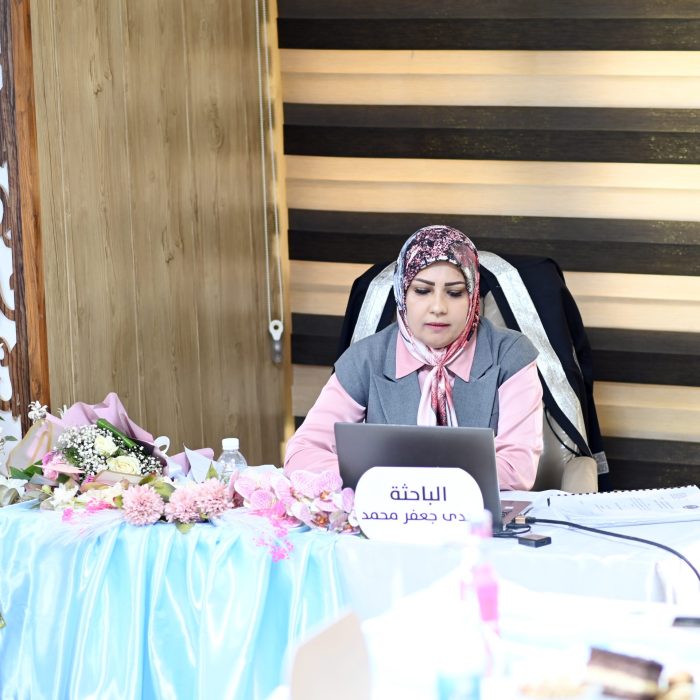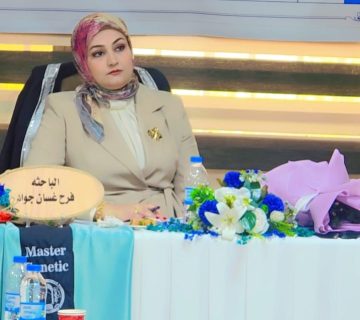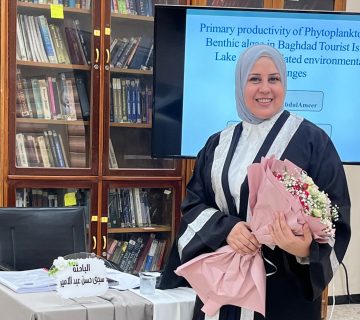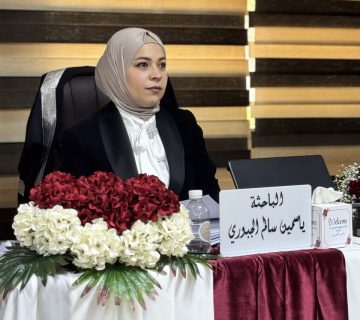Master’s Discussion
The College of Science for Women at the University of Baghdad discussed the Master’s thesis entitled “Synthesis and Characterization of Zr-MOFs Nanostructure for Advanced Applications”
by the student: Huda Jaafar Mohammed.
The thesis aims to synthesize the nanomaterial Zr-MOF using two different methods and compare them to determine the most efficient one, as well as to evaluate its potential for environmental and biological applications.
The thesis included the preparation of zirconium-based metal-organic frameworks (Zr-MOFs) at the nanoscale using two different techniques: the solvothermal method and the microwave-assisted method. A comparison was conducted between the two methods to determine which is more efficient in terms of quality and productivity at the nanoscale, while ensuring economic feasibility and environmental suitability for large-scale production. The prepared materials were characterized using several analytical techniques, including X-ray diffraction (XRD), Fourier-transform infrared spectroscopy (FTIR), thermogravimetric analysis (TGA), Brunauer–Emmett–Teller (BET) surface area measurements, zeta potential analysis, and nitrogen adsorption–desorption isotherms to determine pore properties. The potential of these materials for environmental and biological applications was also evaluated.
The main recommendations concluded by the study indicate that synthesizing Zr-MOF nanostructures using the microwave-assisted technique provides superior physical and chemical properties compared to the solvothermal method, including smaller particle size, higher specific surface area, greater Pb²⁺ ion adsorption efficiency, and higher thermal stability, with no cytotoxic effect on MCF-10 cells. In addition, this method offers reduced cost and shorter preparation time. The study recommends adopting the microwave-assisted technique for synthesis, conducting extensive studies for industrial and biological applications, testing its efficiency with other contaminants and heavy metals, and improving its properties through combining it with different composite materials and altering synthesis conditions.
Excellent.










